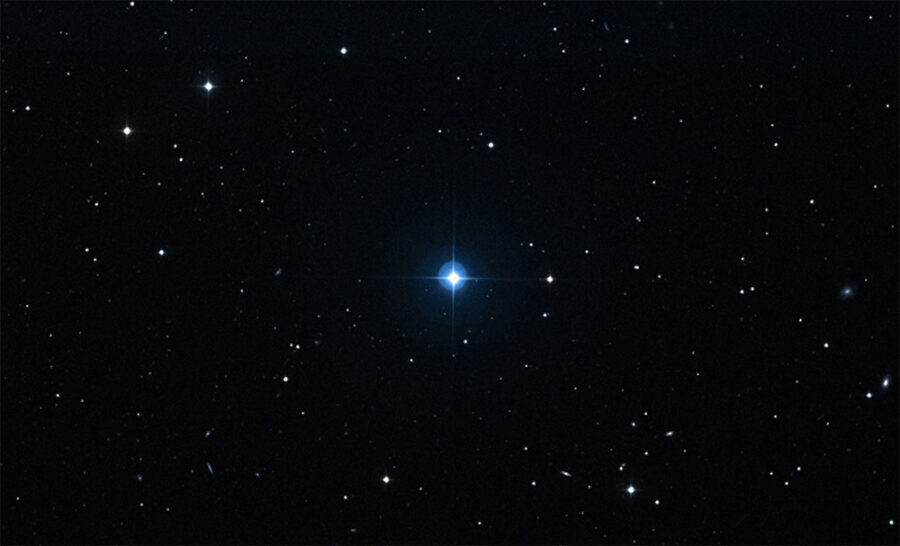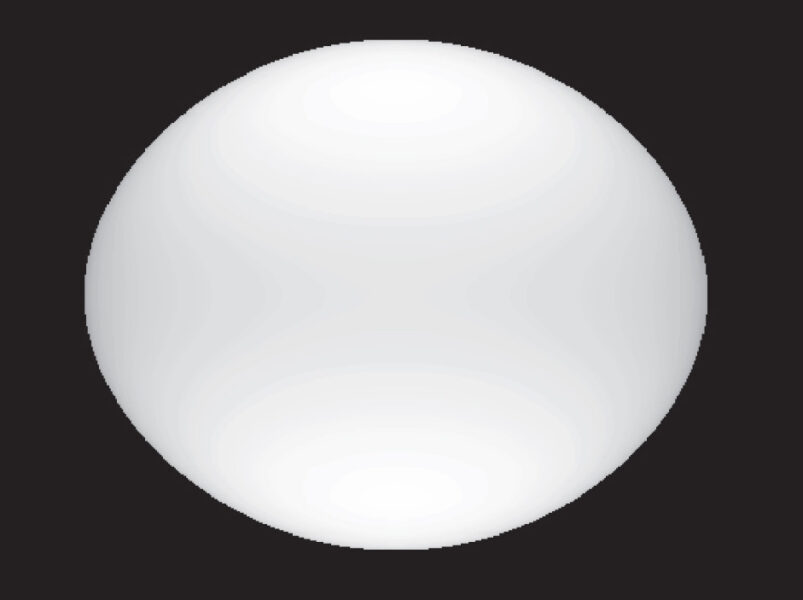There’s a massive star in our galaxy’s halo, far away from the usual star-forming haunts. How did it get there?

Aladin Lite
The crepe-like disk of our galaxy, 100,000 light-years wide and 1,000 light-years thick, is where almost all of the Milky Way’s stars form. So astronomers were baffled when, years ago, they found a massive star 3,000 light-years above the galactic plane — well outside the thin disk. This star was far too young to have traveled out of the disk after its birth. But the idea that such a star could have formed recently in the gas-deprived halo defied reason.
Now, Douglas Gies (Georgia State University) and colleagues have proposed a possible backstory for this stellar wanderer, dubbed HD 93521. It’s currently a blue O-type giant 17 times the Sun’s mass, but perhaps it wasn’t always this way, they suggest. The star might once have been a close pair of lower-mass stars that later merged. The astronomers present this scenario in the February 1st Astronomical Journal.
Too Young to Fly
Astronomers know of other stars that have probably escaped our galaxy’s disk. A dying star’s supernova can eject its stellar companion; so can a close encounter with other siblings in the cluster that gave a star birth.
But massive stars burn fast and die young, and the heft of HD 93521 suggests it hasn’t been around long enough to have escaped the disk. Ian Howarth and Andy Reid (both at University College London) were the first to realize (in 1993) that the star simply wouldn’t have had time to travel so far out.
Now, Gies’s team has redone those calculations using new measurements from the European Space Agency’s Gaia satellite of the star’s distance and its motions. (In particular, Gaia’s measurements resulted in a significant revision of the star’s distance from the Sun, from 7,000 light-years to only 4,000 light-years away.)
The astronomers come to the same conclusion as Howarth and Reid did, albeit with revised numbers: The star appears to be about 5 million years old, but on its current trajectory it would have taken 39 million years to fly up from the disk.
But with Gaia data in hand, Gies’s team can go a step further, tracing the star’s trajectory back 5 million years to look for signs of stellar siblings or nebulous remains of its birth cluster. They find nothing. In lieu of a birthplace in the halo, the star must have come from the disk. The question, then, is how.
Carry On, Wayward Sun(s)
A merger within an ejected star system is one possible explanation. Stars can form in tight pairs that eventually become one. And when they do, the collision stirs up their insides, bringing fresh hydrogen to the merged star’s core, resetting the evolutionary clock. In other words, while HD 93521 appears to be 5 million years old, that “age” might just mark the time of the collision.
A merger could also explain the star’s fast rotation. Although the star is 7.4 times the Sun’s girth at its equator, it rotates around in just 21 hours, compared to the Sun’s 24.5-day equatorial period. In fact, it’s spinning so fast that the rotation deforms the star into the shape of a rugby ball.

D. Gies et al. / Astronomical Journal
The merger scenario requires a rather delicate balance: Less massive stars live longer than more massive ones, so the progenitor stars must be low enough in mass, and thus long-lived enough to explain the 39 million–year journey from the disk. At the same time, though, the two smaller stars must have enough material between them to account for the star’s current mass, all 17 Suns’ worth and then some, since it’s currently losing mass and probably lost some through the merger process, too. Gies notes that the star’s current mass isn’t well known, though, so a wide range of merger scenarios fit the bill.
“The authors have exploited newly available Gaia EDR3 astrometry to resolve long-standing ambiguities and uncertainties in the nature of HD 93521, and thereby to shed light on broader issues of the origin of high-latitude massive stars,” says Howarth. “They make a persuasive case for the star being a merger product.”
 1
1









Comments
ErnieOstuno
February 6, 2022 at 12:50 am
If you are wondering where this star is and how bright, I looked it up on skymap and found it's 7.0 magnitude and located in Leo Minor at 10h 48m 23.51s and +37 34.2.
You must be logged in to post a comment.
You must be logged in to post a comment.